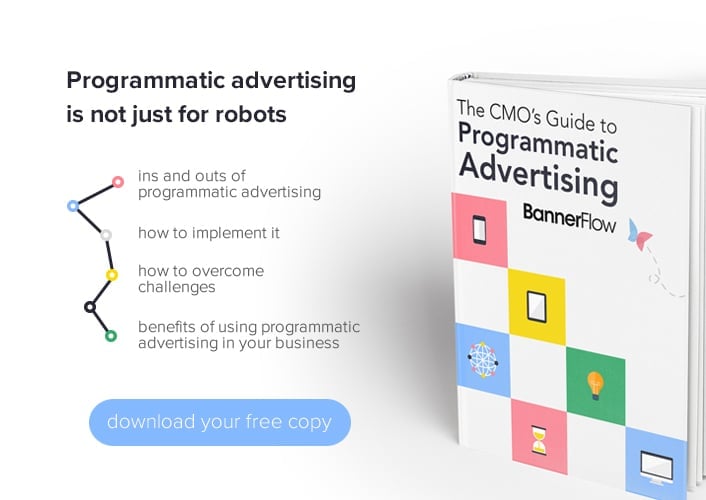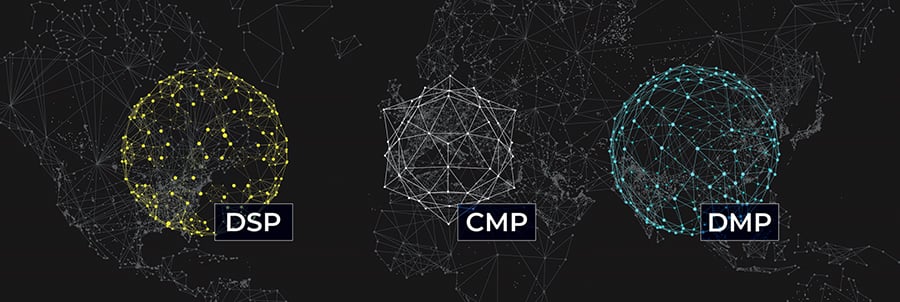
What Are the Challenges with Programmatic Advertising?

So, what are the issues with programmatic advertising? Well, we’re here to give you a little guidance on them, so you can sidestep the potential issues. If it helps paint a picture, think along these lines...
The sun is shining outside, you have the door open to your idyllic garden and you can hear the birds singing. You have someone making you your favourite breakfast, and best of all, it’s Saturday. You have no plans and the day is stretching out gloriously ahead of you. The hammock beckons. Then you hear it. The dreaded thump upstairs, followed by slow, drawn out shuffles against the floors upstairs. Then, it dawns on you. There’s a teenager in the house... Today, it’s 50/50, and you’re either going to have a wonderful, memorable day, or a terribly frustrating one. It all depends on the mood. Well for today, let’s think of programmatic as the awkward teenager. Occasionally annoying and unpredictable, but before your eyes, and with your help, it becomes a fully fledged, successful adult. Here are the issues you'll need to negotiate as Programmatic Advertising makes its way through the awkward years.
Ad Fraud
This isn’t exclusive to programmatic advertising, but is an issue across all online display advertising. The entire online marketing industry is based around impressions, so how many times your ad is viewed, and clicks, which (of course) is how many times your ad is clicked on. So far so good. The real difficulty, and something every advertiser and publisher wants to combat, is how do you know whether your ad is being seen by an actual person?
Ad fraud is when these clicks and impressions are generated by a bot, rather than a human. This is the biggest problem programmatic advertising faces, as it can be responsible for huge chunks of advertising budget being eaten up with no real results to show for it. Ad fraud is a big business, but the business for preventing it is potentially even larger.
For over a decade, Google itself has been working on ways to battle these bots, and have started to look at offering “fraud-free” ads, along with a couple of other companies like AppNexus, which will attempt to detect fraudulent clicks before they appear in your analysis, or eat up your budget. It’s an extremely clever system, but hasn’t been perfected yet. There will still be clicks and impressions registered that didn’t involve an actual person, but the number will be vastly reduced.
Another way advertisers can combat this is through only publishing their ads on reputable websites, and using publishers and networks they know and trust. For this to really work, every party needs to be fully transparent, but this isn’t beyond the realms of possibility. These ad placements may cost a little more, but they offer far more value than inventory which is going out to bots. Bots don’t buy.
Another tip is to avoid advertising in countries where the fraud rates are high. If you follow all of this advice, you’ll reduce the chances of losing your hard earned budget to your ads being devoured by digital demons.

Lack of knowledge
Knowledge, or lack of it, is always a challenge with new tech. As soon as something is released, there’s a swathe of conflicting opinion pieces, a thousand new acronyms, and language specific to the tech which you won’t have heard anywhere else in your entire life. If you don’t think you fully understand programmatic advertising though, you’re far from alone. Nearly 50% of the people using it don’t think they fully understand it!
The fact that there are so many different platforms only contributes to difficulties around lack of knowledge. Approaching each one is essentially trying to learn a new language, particularly if you have no background in programmatic advertising in the first place. Each platform will have its own approach, and its own theories as to what works best, and you will have to learn each one individually. If you look at the different types of programmatic ad buying, there’s every chance that whichever agency you speak to will recommend a different variant, and within that a different approach. For you to make an informed decision, you need to know what each one means, and how it could work for you.
There is a fairly simple solution to this though, and it’s a case of spending the time to learn about it. Consume all the information you can. When it’s broken down in a straightforward, easy way, it seems a lot less complicated, and a lot more like common sense. There are loads of resources out there too, and no shortage of learning material. There’s also our eBook, which you can download for free here.
As the old saying goes, knowledge is power. The more you have, the more you can overcome the other challenges around programmatic, like ad fraud, and help to educate others at the same time. Then we can all walk off into the sunset together, safe in the knowledge that we’ve done our bit to improve the online display advertising landscape.
Inventory Quality
The spend on programmatic advertising is relentlessly rising, and shows no signs of hitting a plateau any time soon. It’s been predicted by eMarketer that programmatic ads will account for 83% of all display buys, which is a staggering figure. This brings its own issues into the mix though. We’ve already discovered that in spite of the sheer amount spent, nearly half of those using it don’t really understand it. So how can this huge cross section of marketers guarantee that that their money is buying the best possible inventory?
Thankfully, as much bad or incompatible inventory there is out there, most companies are working to ensure that your ad gets shown to the most relevant, interested audience. After all, it’s as beneficial for the DSP (Demand Side Platform) for your campaigns to be a success, as then you buy more from them, and recommend them to peers.
There are things you can do as the marketer, too. Firstly, you can choose to go direct, and ensure you know exactly where your ads going to go. Or you can work only with trusted ad networks, where you know all of the inventory is high quality, and that they have great programmatic functionality which ensures your ads are shown in the most relevant places. This ensures that your brand keeps the desired reputation, by only appearing on sites you want to be associated with.
Takeaways
There are a few ongoing issues with programmatic, then, but with a bit of education and effort, they’re all avoidable. It’s still a young technology, a teenager, so there are bound to be a few issues. One thing is for certain though, you will want to know programmatic very well before it fully matures, as that way the relationship between programmatic and your marketing strategy will really flourish. Once the market has learned how to use programmatic to its full potential, it will change online display advertising for the better, forever.
Share this article







